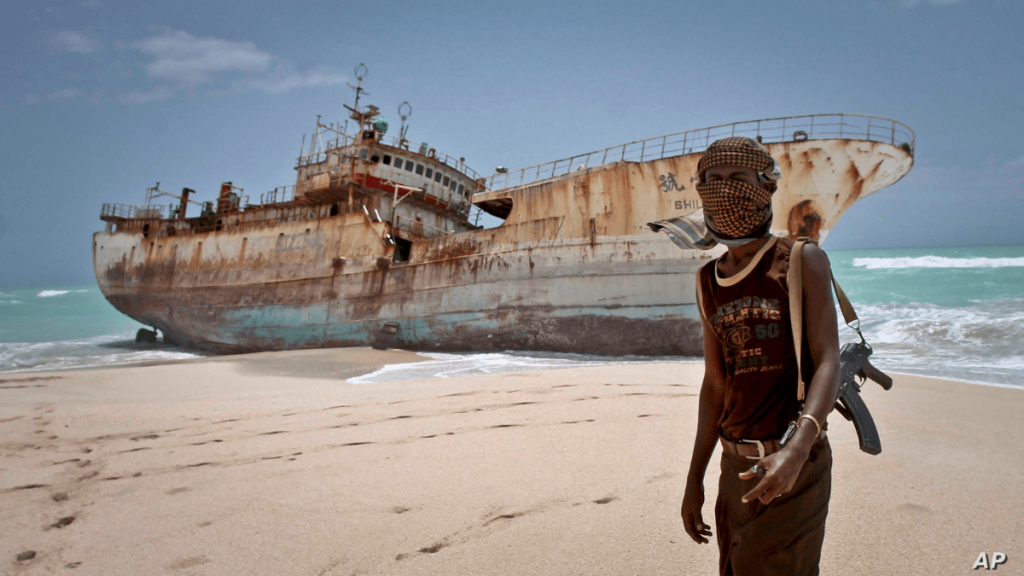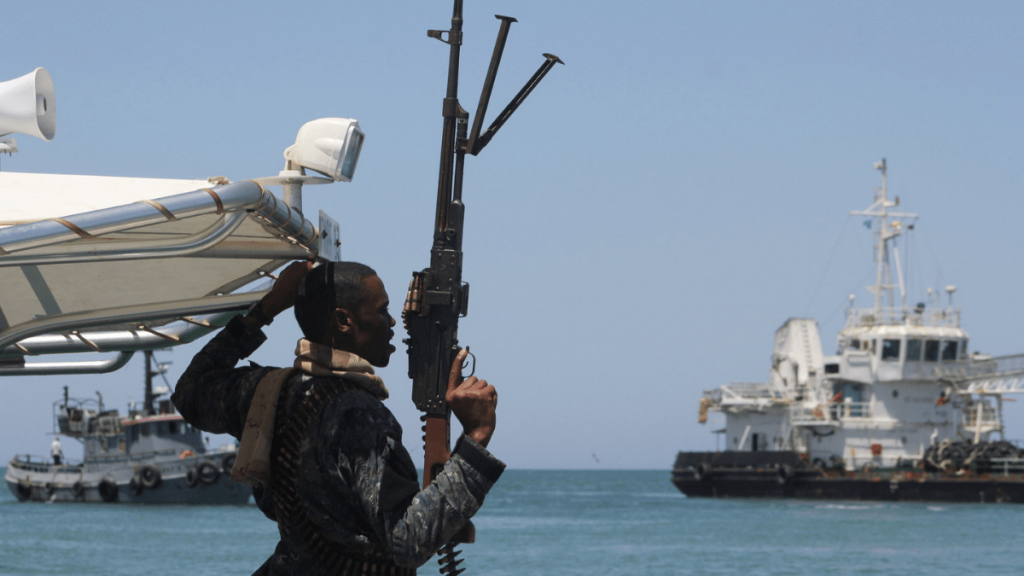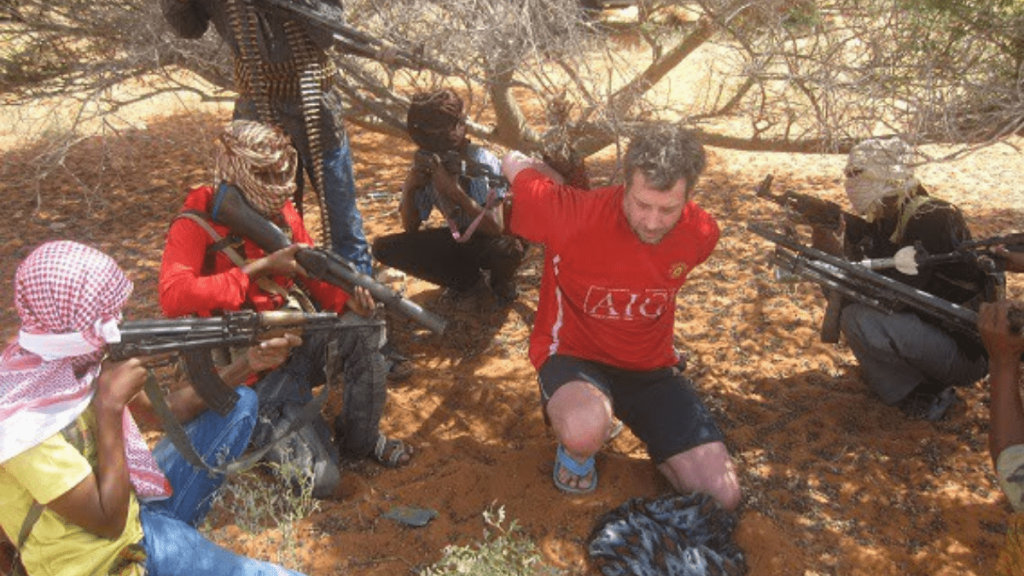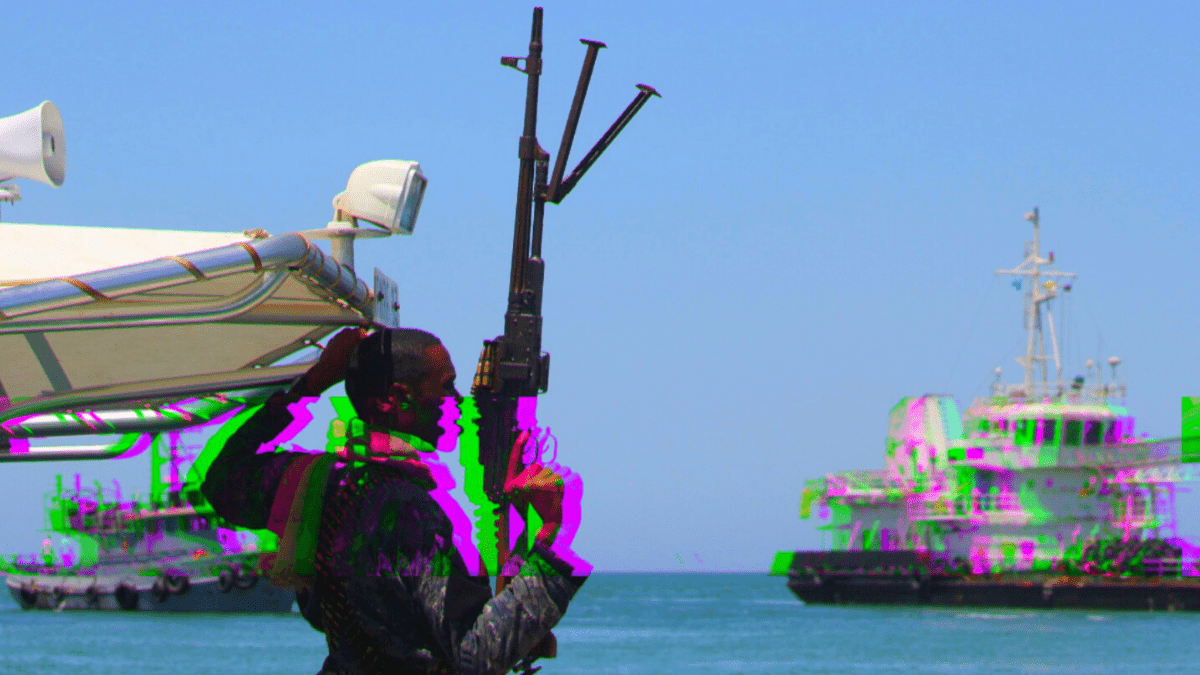The following combat footage took place off the coast of the war-torn, failed state of Somalia in 2015. Filmed via a GoPro on the body armor of U.S. Maritime Security Operators stationed on a cargo ship wearing maritime plate carriers, it shows an ill-fated attack by Somali pirates repelled with a barrage of gunfire.
Despite returning fire back at the operators, the pirates are forced to retreat. As a result of the advantageous position the operators held and the ratio of shots exchanged, it’s likely that many, if not all of the pirates in the skiff, were either killed or wounded in the firefight.
Somali Pirates – Computer nerds, ex-militia, and ex-fisherman.
The world of Somali pirates has been an area of international security that has fascinated me for a long time. These days, the threat is nowhere near what it was in the heyday around 2010 when pirates had captured over 1,180 hostages and received millions of dollars in ransom. The story of how modern-day piracy erupted on a huge scale in Somalia is a truly interesting one indeed.
In the late 1980s, Somalia erupted into a vicious civil war that has gone through multiple phases and continues to be active to this day. In 1991, the central government in the country collapsed in the carnage of widespread armed conflict. When the government collapsed, so did its institutions such as the Somali coast guard.

Somalia has the longest coastline in mainland Africa with over 2,000 miles of access to the rich waters of the Gulf of Aden, the Arabian Sea, and the Indian Ocean. With nobody to stop them, foreign fishing vessels began plundering Somalia’s tuna-rich coastline of fish. Others came to dump toxic waste and trash in the sea. In response, Somalian vigilante groups formed of armed local fishermen began intercepting foreign vessels and ordering them to pay a tax under threat of violence.
In the years following, these vigilante fishermen began eyeing up the oil and cargo rich vessels passing through the narrow strait in the Gulf of Aden where they had no choice but to get close to the coast of Somalia. Armed with rocket-propelled grenades, Kalashnikovs, and moving in high-speed boats, the pirates soon found that capturing these unarmed, relatively slow-moving vessels was a piece of cake.

Generally, a crew of Somali pirates numbers around 10 people. Armed with an array of assault rifles and RPGs, they often attack their intended target under the cover of darkness. It’s common for them to utilize grappling hooks and rope ladders in order to gain access to the ship deck and capture the crew.
The War on Piracy Through Operation Atalanta
Back in the early days, various international maritime laws left crews largely powerless to defend themselves from heavily armed pirate attacks. They were forced to rely on methods such as high powered fire hoses, sirens, and maneuvers that aimed to disrupt the movement of pirate vessels by utilizing the large wake at the back of the ship. Such tactics were seen on screen in the acclaimed movie Captain Phillips which covered the true story of the Maersk Alabama ship that suffered a successful pirate takeover on the 8th April 2009.
In 2011, four U.S. citizens who were sailing the world on a Christian mission to distribute bibles were captured by Somali pirates around 300 miles off the coast of Somalia. As U.S. forces on a nearby naval vessel attempted to negotiate the release of the hostages, gunfire erupted. All four were killed.
“Eight pirates armed with guns and RPG in two skiffs, launched by a pirate mother vessel, attacked a container ship underway. Master increased speed to 22.8 knots and the skiffs followed at 23.5 knots. They approach very close and fired upon the ship. Master made evasive maneuvers and prevented the boarding.”
– An example of a reported attack from Somali pirates. 11.04.2009: 1240 UTC: Posn: 00:18.2N – 051:44.3E, About 285 nm east of Mogadishu, Somalia.
By 2008, Somali pirates had successfully overrun 40 vessels and taken crew members as hostages. Subsequent ransom payments were usually up to $2 million. In Somalia, this money buys you a lot of power. Somali pirates used this money to invest in more modern weaponry, better attack boats, hire accountants and buy more advanced piracy methods. Alongside generic ex-fisherman and former militia, computer nerds were hired to track ships, use the radio systems to demand ransom, and operate maritime GPS.
The vast sums of wealth stemming from piracy were one of the biggest contributors to the decimated Somalian economy for a number of years. In fact, the economy of Somalia’s Autonomous Region of Puntland which straddles the Gulf of Aden shipping channel was almost entirely funded by piracy gains and was essentially a pirate town with restaurants and hotels made to cater for captured crews in order to ensure a better ransom.

By the end of 2012, the golden age of piracy was deemed to be over. The massive economic impact and instability caused by Somali pirates led to an international, EU-led security mission called Operation Atalanta patrolling the high-risk areas. Their initial presence alone wasn’t enough to stop it, however, as the piracy territory of more than four times the size of the U.S. state of Texas. Interestingly, it was the first-ever naval operation carried out by the European Union.
In the years following the introduction of the international security force as well as various private military companies providing maritime security through ex-military operators as featured in this video, piracy levels dropped drastically. According to this international piracy map, as of June 2020, there were no reported piracy attacks off the coast of Somalia.













